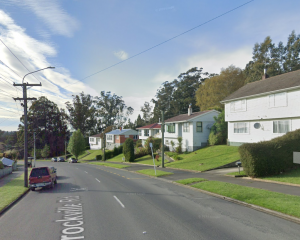"Passchendaele: The Belgians Have Not Forgotten", opens at the museum tomorrow and its artefacts - including machine-guns, trench mortars, body armour and battlefield relics - provide a physical link with the past.
October 12, 1917, during the Battle of Passchendaele, in Belgium, was the bloodiest day in the country's military annals, with 2700 New Zealand casualties, including more than 840 dead.
Nearly 200 Otago soldiers were killed, including more than 90 from Dunedin.
They died when the Otago Regiment led the first wave of assault against at least eight German pillboxes, without adequate artillery support, exhibition organisers said.
"As a result, Bellevue Spur would become the graveyard for many of these brave young men," the exhibition's Belgian curator, Franky Bostyn, said.
The Belgians were bringing the exhibition to Dunedin as a mark of deep respect for the "Southern men" who had given so much, Mr Bostyn said.
Sean Brosnahan, a settlers museum curator who has helped co-ordinate the Dunedin show, said Passchendaele was "a tragic part of our history" and the exhibition would have special meaning for the many Dunedin and Otago people who had lost relatives on the Western Front.
The display was developed by the Memorial Museum Passchendaele 1917, a Belgian institution, and is touring New Zealand with the backing of the Belgian Government.
Transport is provided by the New Zealand Army, with the Returned Services Association and the Waimakariri-Zonnebeke Trust also providing support.
The exhibition includes several memorable sculptures by well-known Belgian artist Rik Ryon, using parts of British and German World War 1 shells.
Among those killed on October 12, 1917 was 22-year-old Corporal Peter Brown Hosie, who had been working as an architect in Dunedin.
Just before his conscription, he had won a competition to design Wanganui's Sarjeant Gallery, and authorities agreed to a request by the then Wanganui mayor to defer Hosie's posting until he completed the working drawings.
Widely regarded as among the finest provincial gallery buildings in New Zealand, the gallery was opened in September 1919. It was Hosie's only work.
He died three weeks after the foundation stone was laid, and now lies buried at the Passchendaele New British Cemetery.
The exhibition runs until July 5. The display will be formally opened today.
• A feature by historian Dr Don Mackay about the Passchendaele fighting and the involvement of Otago troops will appear in the Otago Daily Times tomorrow.












